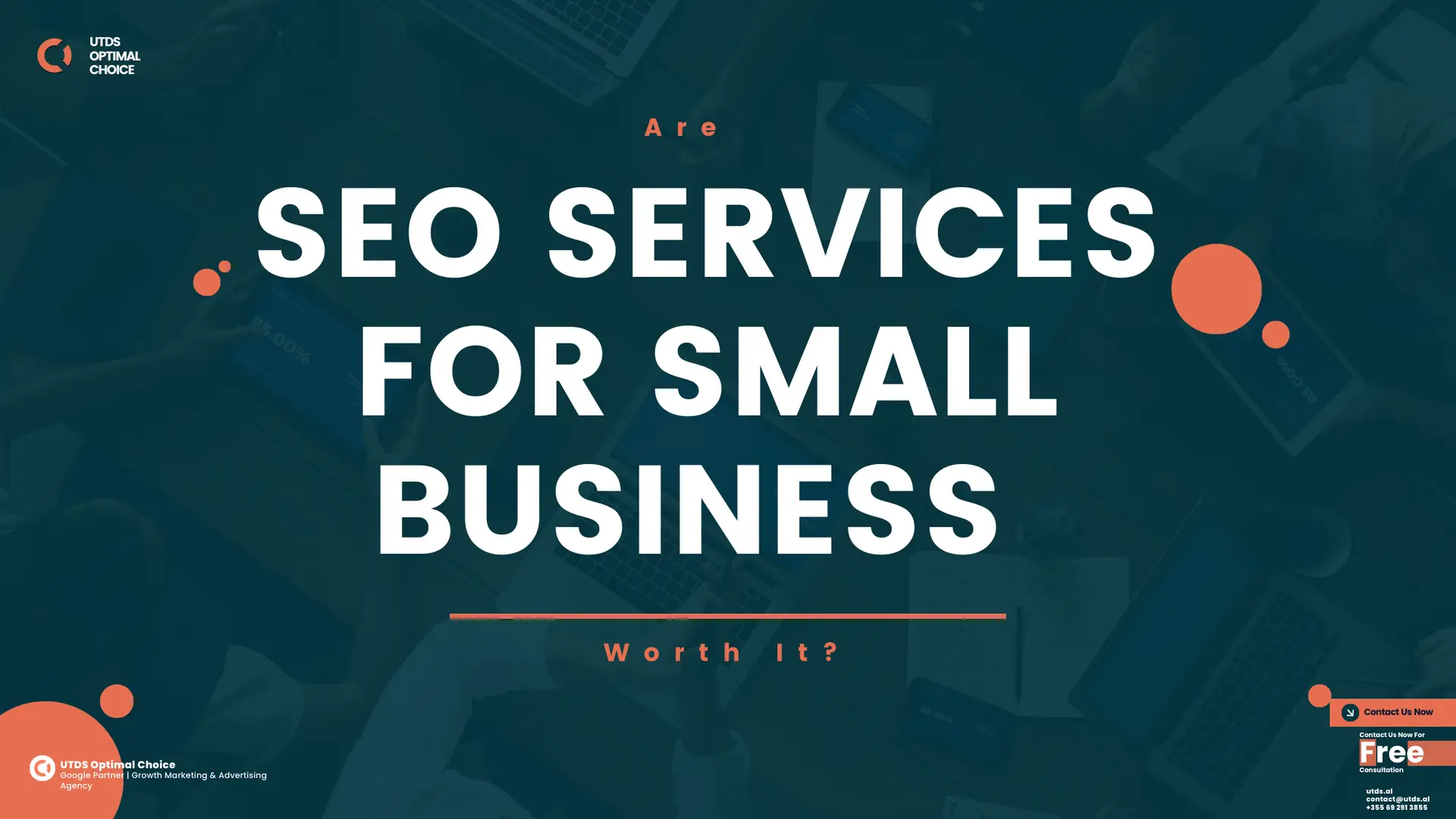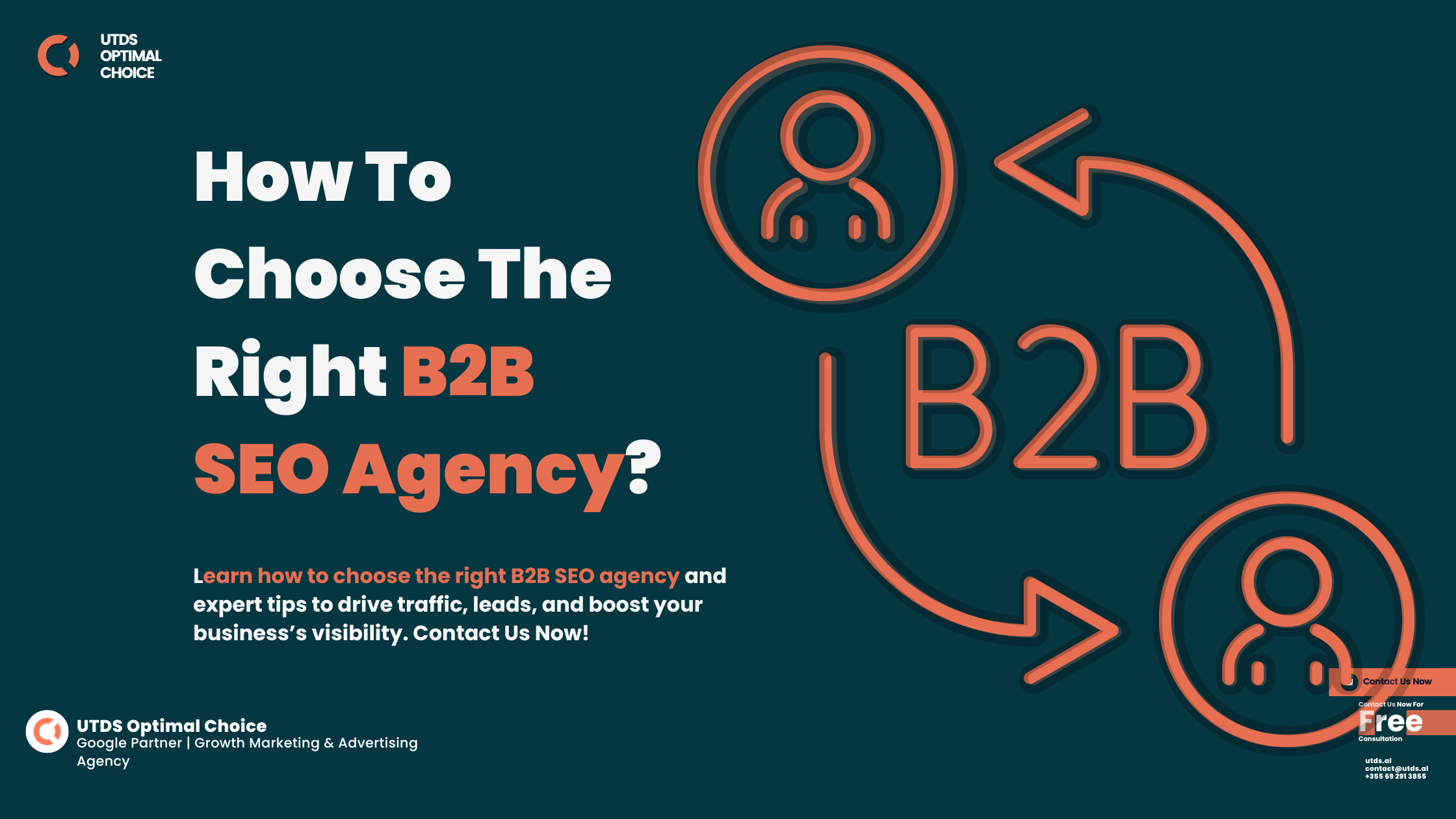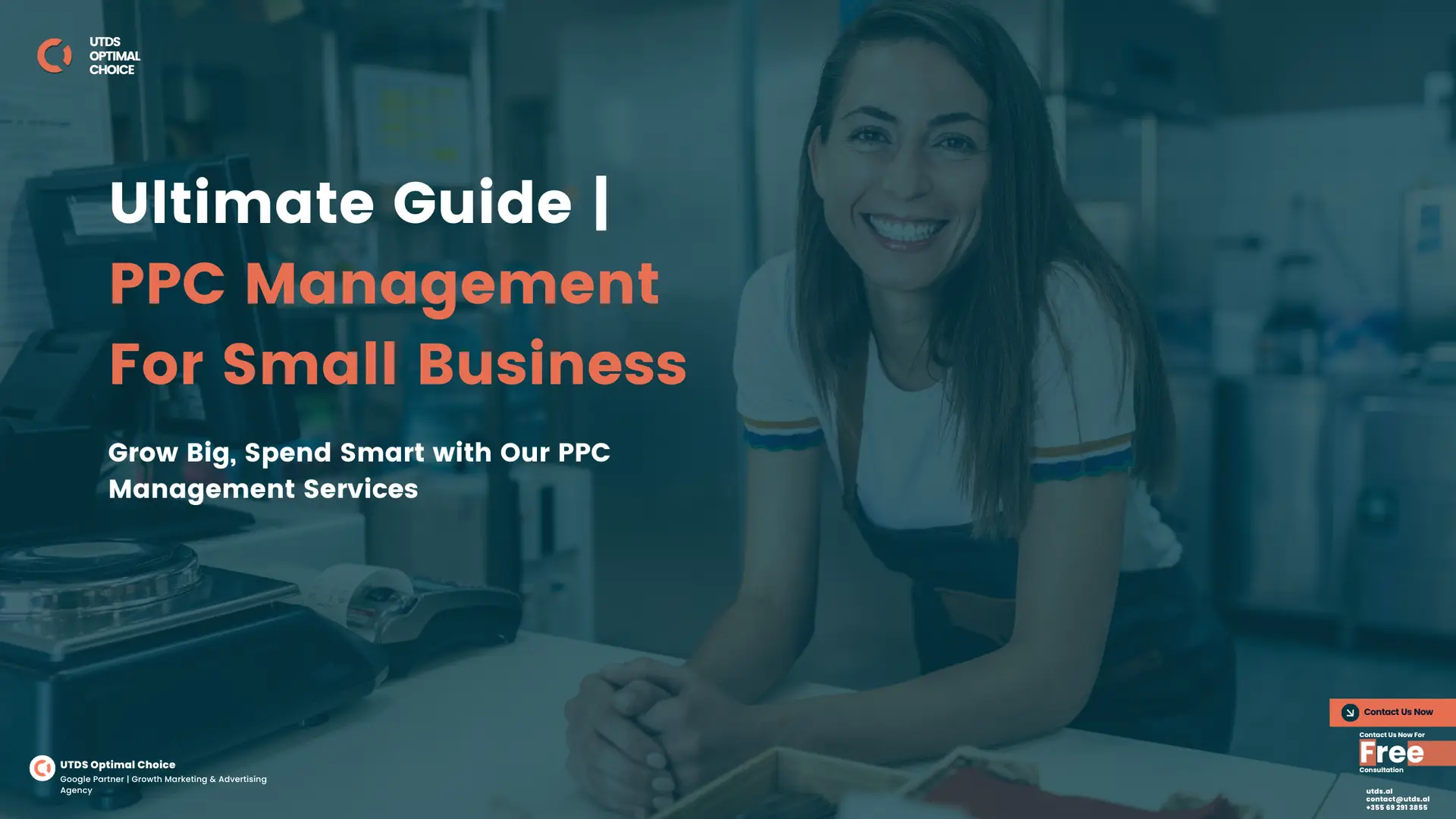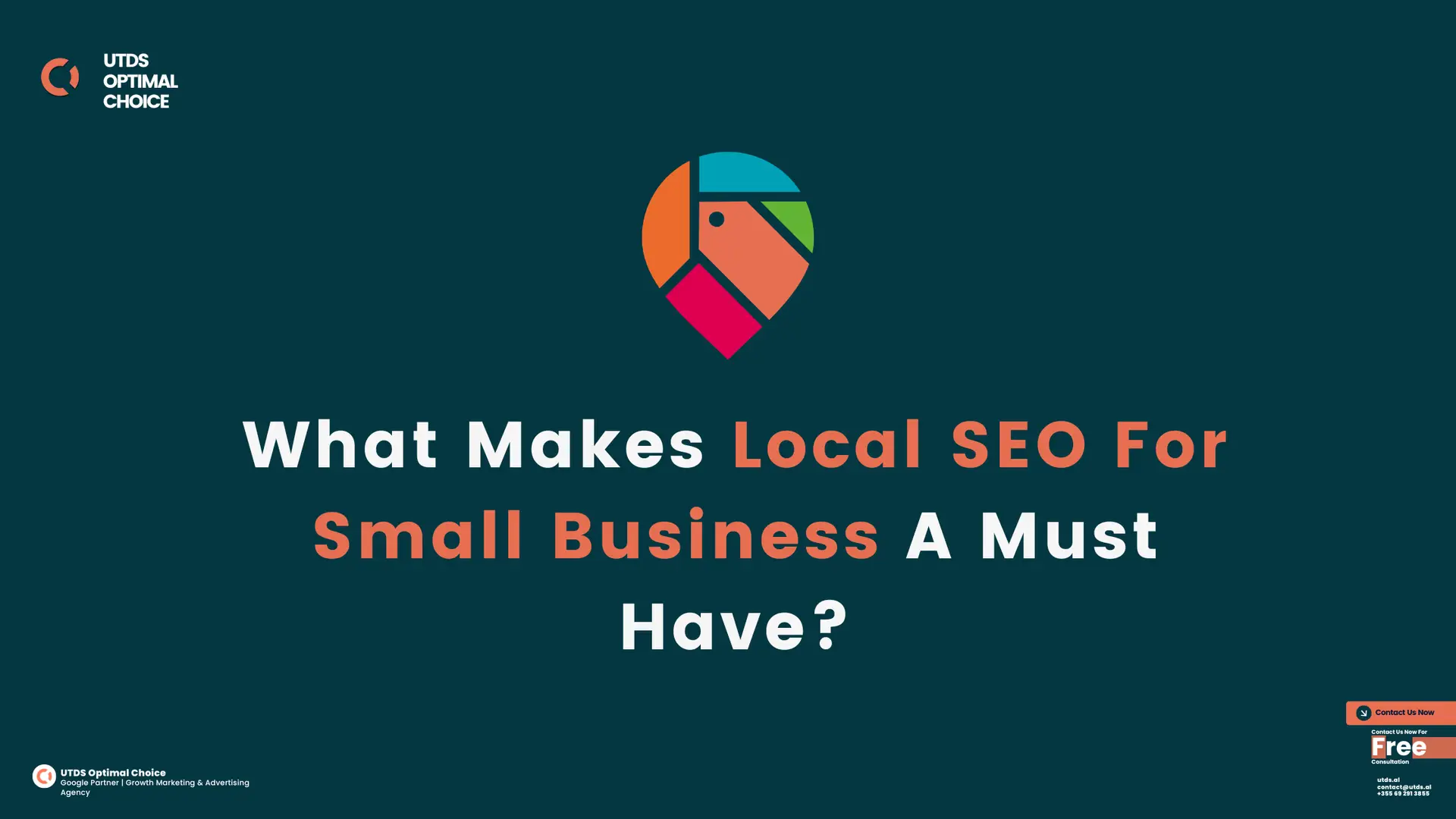Organic search traffic works differently. It brings people to your site because your content answers what they’re looking for. No budget needed, no daily ad spend. Just clear, relevant pages that rank in organic search results.
It lasts. It builds over time. And it brings users who actually want what you offer. That’s why organic search is still the highest ROI channel.
Let’s be honest, when ads stop, so does the traffic. That’s the problem with paid.
This is a complete organic search traffic playbook that works, it’s built for people who are looking to build an audience organically, not paid. So let’s talk about what actually brings traffic in, and keeps it coming.
Looking to drive more visitors to your website? At UTDS Optimal Choice, we specialise in creating tailored strategies to boost your online presence and attract the right audience. From SEO to PPC campaigns, we’ll help you increase traffic and turn clicks into customers. Contact us today and start seeing real results from your website!
With the majority of searches happening on smartphones, a mobile first web design is essential for increasing traffic. Ensure your site loads quickly, is easy to navigate, and provides a seamless user experience on all devices.
Why Organic Search Still Drives The Highest ROI
Paid ads might spike your traffic instantly, but that spike vanishes the moment your budget stops. Organic search traffic, on the other hand, builds compounds. A single content asset can drive months or years of search traffic without further spend.
- 94% of Google clicks go to organic results, while only 6% go to paid ads. ( Sources; Digital Silk)
- A B2B-focused LinkedIn post found 53.3% of all web traffic comes from organic search, compared to just 27% from paid.
- Plus, 49% of marketers say organic search is the most profitable marketing channel.(Source; Higher Visibility)
Search Intent
People who click an organic result are already in problem-solving mode. They’re researching or comparing, not just browsing ads. That’s why organic visits convert better and cost less in the long-run .
Trust Comes Built In
Users trust organic results more. One study shows the top organic result gets 39.8% click-through, while the top paid ad only grabs 2.1%. That level of trust drives better engagement and brand equity.
ROI
Organic SEO isn’t a short-term fix, it pays back more over time.
- According to Semrush, each pound spent on SEO returns £2 – £2.75 in profit, while social media often sees a –90% ROI.
- WebFX reports that organic-first efforts can yield 43% year-over-year traffic growth and 71% more form submissions with solid SEO practices.
Free Calculator to Compare ROI
Wild Creek Web Studio’s “Organic vs. Paid Traffic ROI Calculator” clearly shows how choosing organic traffic leads to higher net returns over time.
Insights from Experts
In the Reddit thread “The ROI of SEO”, one entrepreneur walked through how ranking #1 for a single keyword resulted in £3K+ monthly revenue using free tools like Ahrefs and Google keyword Planner.
Interesting podcast you can check;
On the In Search SEO podcast, host David and guest Charlie discuss “accurate forecasting” and the long-term gains of organic traffic over paid campaigns.
9 Proven Ways To Increase Organic Search Traffic In 2025
1. What is Organic Search Traffic?

Organic search traffic refers to visitors who land on your website after clicking a non-paid listing in search engine results. These are people who found your page because it matched their query not because you paid to appear.
It’s different from direct traffic (typing your URL), referral traffic (clicking a link on another site), or paid search traffic (ads). What makes it powerful is search intent, users searching through Google are actively looking for something specific.
When your site appears in organic search results, it means Google considers your page the most relevant match for that search term. And when it ranks high, you get more qualified clicks, without the cost of ads.
27.6% of all clicks go to organic search results (Backlinko, 2025).
In a recent r/SEO thread in Reddit, several users shared that over 60% of their converting traffic came from organic search, reinforcing how important it remains for B2B and service-led businesses.
2. How to Increase Organic Search Traffic
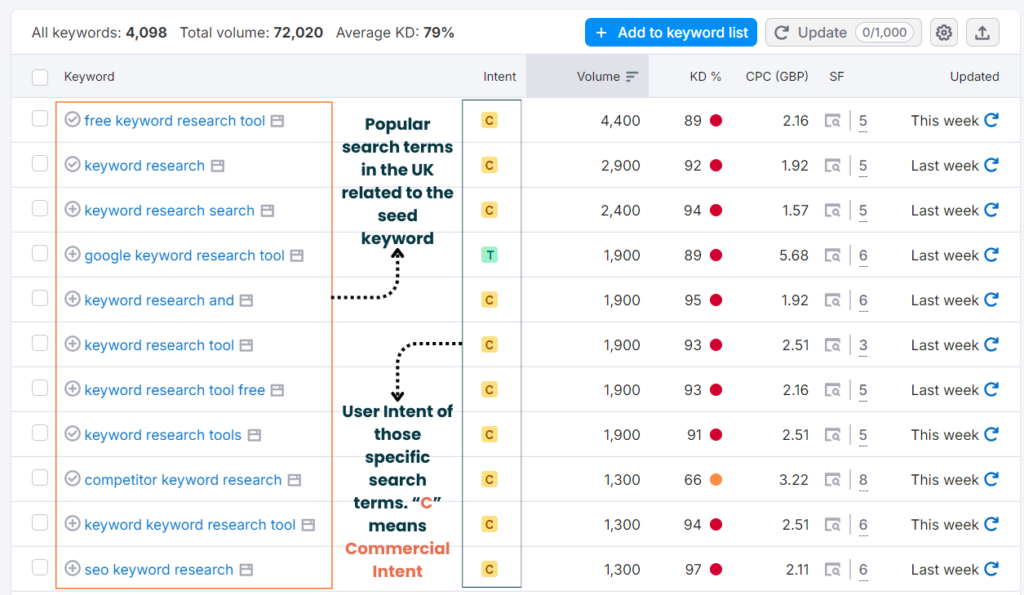
Driving consistent organic search traffic isn’t just about writing more blog posts. It’s about creating the right structure and signals that search engines trust and users find useful.
1. Create Keyword-Targeted Content
Use tools like Google Search Console and Ahrefs to identify actual terms your audience uses. Match content format to intent:
Informational queries: guides, definitions, FAQs
Transactional queries: feature pages, comparison tables
Other sources; In a 2025 Authority Hacker Podcast, Gael Breton said: “Blog content that matches query intent outperforms 10x word count posts that don’t.”
2. Build a Fast, Mobile-First Website
Speed and usability are direct ranking signals. Google’s Core Web Vitals update made that clear.
Use PageSpeed Insights and WebPageTest to identify delays.
Compress images (WebP format), reduce scripts, upgrade hosting.
Bounce rates increase by 32% when page load time rises from 1s to 3s (Browserstack).
3. Internal Linking Structure
Link between related blog posts, services, and cornerstone content.
Keeps users longer on site
Improves crawl depth
Spreads ranking signals
A Moz thread confirmed deep pages began ranking better after increasing internal links from blog clusters. (Moz Learning Guide)
4. Add Schema Markup
Add structured data: FAQ, HowTo, Product, Article.
Helps Google understand your page better
Increases visibility in rich results
Yoast reported a 12% CTR boost after adding FAQ schema without changing ranking position.
Here is an interesting thread in Reddit, many users and companies implemented Schema and shared their results here.
5. Match User Intent, Not Just Keywords
Google promotes content that’s relevant, not long.
Focus on clarity and formatting
Use headers, summaries, bullet lists
In a 2025 post, users agreed that shorter content with clear formatting outperformed longer pieces that buried the solution. (Google’s 200 Ranking Factors, Backlinko)
3. How to Drive Traffic to Your Website with Content
Creating content that ranks in organic search is not about frequency. It’s about precision. To grow organic site traffic, every piece must be built to match search intent, use SEO-friendly structure, and offer more value than what already exists on page one.
1. Target Real Queries to Drive Organic Search Traffic
Focus your content on what people are actually typing into Google. Pull your topics from:
- Google Search Console: shows real search terms sending traffic to your site
- Reddit and Quora: surface long-tail phrases with high intent
- People Also Ask and Autocomplete: reveal subtopics Google already associates
Long-tail keywords account for over 70% of all search traffic, especially in service-based and informational queries (Ahref)
Experts and Companies debate (r/SEO): A B2B consultant shared that by basing blog titles on Reddit questions, they increased organic search traffic by 41% in 60 days, without building new links.
2. Use SEO Structure to Improve Organic Search Results Visibility
Pages that generate search traffic follow predictable structure:
- One H1 per page (containing the primary keyword)
- Use of H2 and H3 to organise ideas
- Bullet points, numbered lists, and FAQs
- Anchor links for jump navigation on long pages
Google Developers confirmed that well-structured content blocks improve indexability and snippet eligibility in organic search results.
On Search Off the Record, Google Search Central Podcast, Google’s Lizzi Sassman said, “Structure helps Google understand your intent and answer fast. Without it, your content is noise.”
3. Balance Evergreen Content with Topical Search Traffic
Split your strategy:
- Evergreen content like “What is organic search traffic?” captures long-term organic traffic
- Timely content like “Best SEO tools for 2025” helps with freshness signals
Businesses that updated their old blog posts with current data saw a 106% increase in organic traffic within 90 days. (Hubspot)
In one of the articles in Search Engine Land reported that Google’s freshness layer now re-evaluates certain organic search rankings weekly for trending terms.
4. Write Clearly. Use Keywords Without Overusing Them.
Natural keyword placement improves readability and ranking:
- Use your target keyword in the first 100 words
- Repeat it 2-3 more times, depending on content length
- Include variations and synonyms: e.g., “search traffic”, “organic site traffic”, “organic results”
Tip: Google understands context. Relevance and clarity matter more than keyword frequency.
5. Add Original Media to Improve Organic Site Traffic Engagement
Content with charts, graphs, screenshots, or embedded videos retains attention and earns backlinks.
In Google developers guide about Image SEO best practices, they mentioned “Pages with at least one original image were 12% more likely to rank in the top 10 organic results.
Using the Venngage article as reference, you can understand that, Visual posts are 2x more likely to be shared and cited.
Tool Tip: Use Canva, and Adobe Creative to create interactive visuals that drive time-on-page, an indirect ranking factor.
6. Repurpose Content to Multiply Organic Traffic Channels
One blog should lead to:
- A LinkedIn carousel (driving branded organic traffic)
- A Twitter/X thread (driving referral-to-organic crossover)
- An SEO-optimised Medium post (set canonical to your domain)
Podcast: On Marketing School, Neil Patel said, “You can triple your organic traffic by repurposing, not rewriting.”
Here are some brilliant examples to repurpose your content by Wordstream
7. Promote in Forums and Aggregators that Feed Search Signals
After publishing, share content in channels Google crawls frequently:
- Reddit (niche subreddits)
- Hacker News, GrowthHackers, Zest, Product Hunt
- LinkedIn Groups relevant to your industry
Case Insight: A startup founder shared on Indie Hackers how a single post in r/SaaS resulted in 3.8K visits, 30% of which became long-term organic users due to improved branded search lift.
8. Feature Experts to Build Relevance and Earn Links
Mentioning or collaborating with experts signals quality to both users and Google. Use:
- HARO (Help a Reporter Out) for quotes
- Expert roundups with follow-ups
- Linked citations to trusted domains
Roundup articles have 28% more backlinks and 32% higher average session duration than standard posts. (Adam Connell)
4. How to Increase Website Traffic with SEO
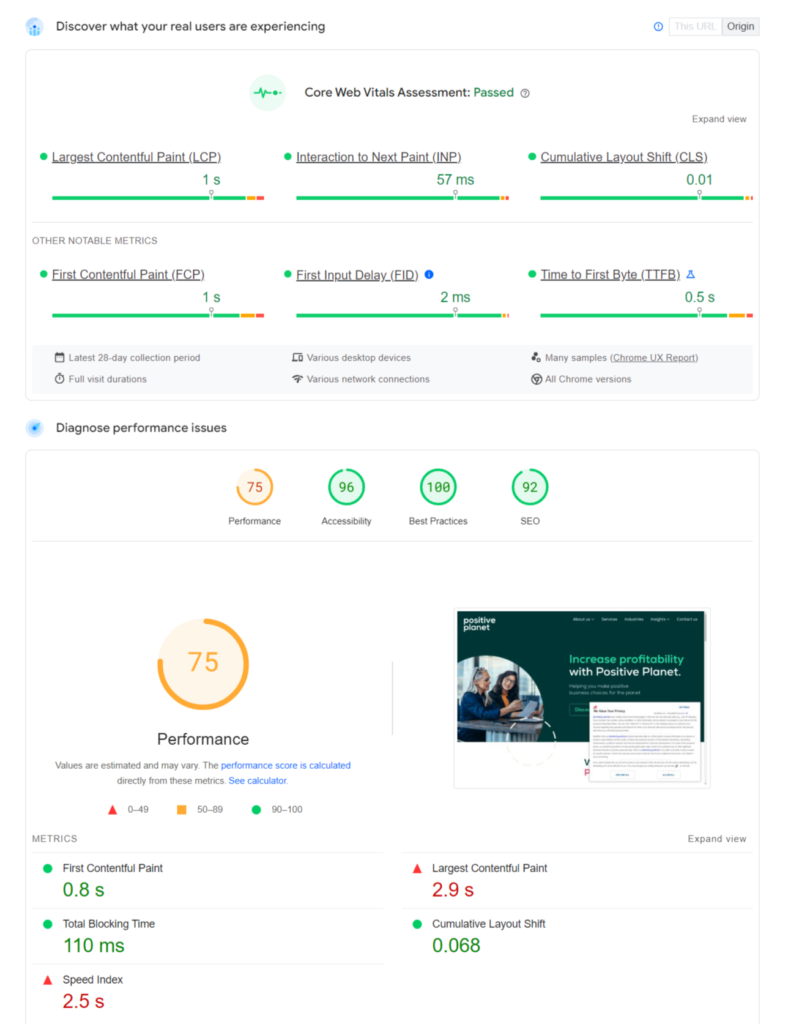
Search Engine Optimisation (SEO) remains the most effective way to grow organic search traffic that converts consistently. But ranking in organic search results requires more than just inserting keywords, it’s a mix of technical hygiene, content depth, and strategic positioning.
Here’s what works in 2025, based on data, field results, and published insights.
1. Start with Technical SEO Clean-Up
Before creating content, ensure Google can crawl and index your website correctly.
- Submit your sitemap to Google Search Console
- Fix crawl errors (404s, redirects, broken internal links)
- Use tools like Screaming Frog or Ahrefs Site Audit
Websites with declining organic traffic had unaddressed crawl errors or indexing issues. (Semrush)
Interview; In a TechSEO Podcast episode, Areej AbuAli discussed how fixing just four redirect loops on a client’s site led to a 22% lift in indexed pages and a 12% increase in organic impressions.
2. Optimise for Core Web Vitals
Speed and usability are now direct ranking signals. Focus on:
- Largest Contentful Paint < 2.5s
- Total Blocking Time < 200ms
- Cumulative Layout Shift < 0.1
Use tools:
- PageSpeed Insights
- Web.dev
- Cloudflare APO for WordPress speed improvement
3. Create Content That Matches Search Intent
Don’t guess. Use SERP analysis:
- Search your keyword in incognito mode
- Check what content format ranks (guides, lists, videos, tools)
- Replicate the structure not just the keywords
Pages that matched the intent of the top-ranking results outperformed mismatched formats by 72% in click-through rates and dwell time.(Backlinko)
4. Use Long-Tail Keywords to Capture Organic Site Traffic
Target longer, more specific phrases with clear intent.
- Example: “best SEO agency in Birmingham for dentists”. This has higher conversion rate than “SEO agency UK”
Tools to find long-tails:
- Keywords Everywhere
- Ahrefs
- Google’s Related Searches
5. Optimise Titles, Meta Descriptions, and Headings
- Keep title tags under 60 characters
- Include target keyword close to the start
- Use compelling, benefit-focused meta descriptions (≤155 characters)
- Only one H1 per page
Pages with clear, keyword-rich titles get 33% higher CTRs (SEranking).
6. Add Structured Data Markup (Schema)
Use schema to improve your page’s eligibility for:
- Rich snippets (FAQ, HowTo, Review)
- Enhanced search result listings
- Voice search compatibility
Tools:
- Rank Math Plugin (WordPress)
- Google’s Structured Data Testing Tool
7. Build Internal Links that Distribute Authority
- Link related blog posts using descriptive anchor text
- Prioritise links to high-converting pages
- Keep click depth (number of clicks from homepage) under 3 for key URLs
8. Update Old Pages to Sustain Organic Search Result Rankings
- Refresh outdated stats, links, and examples
- Add new media or schema markup
- Resubmit updated pages to Google Search Console
9. Build Organic Backlinks by Earning, Not Buying
Google’s spam policies are stricter in 2025. Avoid PBNs or link farms. Instead:
- Create linkable assets (tools, data studies, calculators)
- Use digital PR (respond to journalist queries via HARO or Featured)
- Offer guest content on relevant, authoritative blogs
5. How to Drive Website Traffic with Social Media
Social media won’t directly improve your rankings in Google. But it plays a key role in how people discover, share, and engage with content, all of which indirectly help you drive qualified search traffic and grow organic traffic over time.
Here’s how to use social media as part of an SEO-supporting strategy:
1. Distribute High-Intent Content Natively
Don’t just drop links. Instead, extract the value and share it where people are.
- Post carousels and infographics on LinkedIn
- Share summaries as Twitter/X threads
- Use TikTok or Reels for short explainers with link-in-bio CTAs
2. Build Relationships with Amplifiers
Identify people who already have your audience. These include:
- Industry-specific influencers
- B2B account managers
- Niche community admins
- SaaS founders or consultants in LinkedIn groups
Refine Labs’ Chris Walker explained that branded search traffic rises when influencers discuss your name, even if they don’t link to you.
This boosts branded search volume, which feeds into organic traffic authority.
3. Promote Evergreen & Timely Pages on a Fixed Rotation
Organic search works slowly. Social media helps you accelerate exposure of pages Google hasn’t indexed deeply yet.
Create a post rotation system:
- Evergreen: monthly resharing of pillar blog content
- Timely: posts linked to calendar events (e.g., tax deadlines, seasonal topics)
Tip from Justin Welsh: On LinkedIn, he reshared the same blog in 6 formats over 60 days and increased organic search clicks by 40% via assisted discovery.
4. Use Reddit and Quora for Direct Answer Placement
Reddit and Quora rank in Google. But they’re also high-traffic platforms themselves.
How to use:
- Find threads related to your service
- Add value, answer clearly, then link to a deeper blog guide
- Don’t self-promote, be useful first
5. Post Thought Leadership Regularly
SEO favours brands that people search for. Social media is how you build that awareness.
Topics that generate search traffic indirectly:
- How-to advice based on your internal processes
- Industry commentary tied to trends
- Unique workflows, tools, or ideas from your business
Thought-leadership posts from small business founders drive 31% more branded search queries after consistent weekly posting for 3+ months. Here are some best social media marketing tips shared by buffer.
6. Join Conversations That Build Trust and SEO Signals
Don’t just post, engage:
- Comment on niche influencer posts
- Join live threads during news cycles (e.g., Google updates, legislation changes)
- Drop links when it’s helpful, but don’t overuse it
Engagement-based content earns more referral links and longer dwell time when users eventually land on your site, both indirect SEO boosters.
7. Monitor Social SEO Trends
Google now indexes social profiles, Threads, LinkedIn posts, and even public Discord chat content.
Make sure:
- Your bios include keywords (e.g., “London-based PPC Agency”)
- Posts answer common questions in your field
- Your brand name and blog URLs are consistent
6. How to Get Traffic to Your Website with Listings
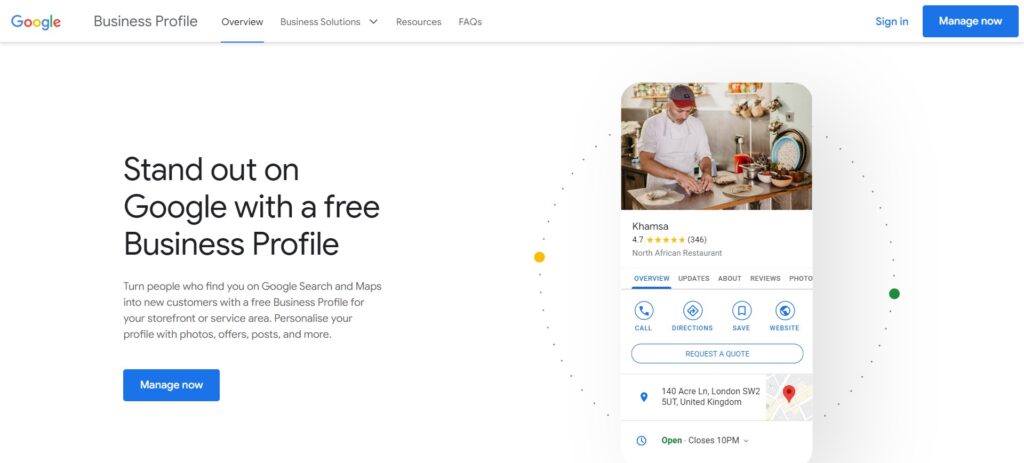
Third-party listings still play a critical role in increasing organic site traffic, especially for local businesses and service providers. Google uses these listings to verify your legitimacy, aggregate reviews, and populate map packs, which now dominate over 40% of local SERP clicks.
Done right, listings become high-authority referrers and traffic amplifiers.
1. Optimise Your Google My Business Profile (GBP)
It’s the most visible listing and directly affects your organic traffic for local queries.
Checklist:
- Use your full business name (no keyword stuffing)
- Add primary and secondary categories
- Include a keyword-relevant business description
- Add high-quality, geo-tagged photos
- Respond to all reviews (especially negative ones)
Businesses with fully completed Google Business Profiles receive 68% more organic impressions and 22% more clicks than incomplete ones.
2. Submit to Industry-Specific Directories
While generic directories like Yelp still matter, niche directories drive more qualified traffic.
Examples:
- Construction: Checkatrade, RatedPeople
- Legal: Avvo, Law Society
- Healthcare: Doctify, NHS listings
- B2B: Clutch, G2
Businesses listed in 10+ niche directories saw a 23% increase in map pack rankings within 90 days. Include consistent NAP (Name, Address, Phone) across every listing, even one character mismatch can fragment your authority.
3. Use Review Platforms to Build Search Authority
Customer reviews feed into both SEO and conversions.
- Respond publicly to every review
- Use keyword-relevant replies (“Thanks for your feedback on our SEO audit services in Manchester”)
- Ask for reviews post-service via email
4. Get Listed in Map-Based Aggregators
Aggregators like Apple Maps, Bing Places, TomTom, and DuckDuckGo Local feed into navigation tools and third-party apps.
- Use Yext, Moz Local, or Uberall to distribute your NAP data
- Regularly audit listings for accuracy
- Include operating hours, holiday exceptions, and booking links
5. Add Listings in Content Aggregators and Comparison Sites
Comparison content ranks extremely well in organic search and it’s often driven by aggregator sites.
Examples:
- “Best Digital Agencies in London” – Clutch
- “Top 10 SEO Tools in 2025” – G2, Capterra
- “Compare Mortgage Brokers” – Finder, NerdWallet
7. Should You Buy Organic Search Traffic?
There’s no shortcut to building lasting organic search traffic. But many businesses are still tempted to “buy” their way into it, either through shady providers or artificial engagement schemes.
Let’s break down what it really means to “buy organic search traffic,” why it rarely works, and how Google responds to it.
1. What Buying Organic Traffic Usually Means
Most providers promising “organic traffic” fall into one of these:
- Bot traffic: automated scripts that mimic users but never convert
- Traffic exchanges: websites sending visitors back and forth to fake engagement
- Pop-unders or redirects: low-quality traffic that inflates visits but hurts metrics
- PBNs (Private Blog Networks): artificial backlinks from low-quality sites
These methods don’t help you rank, they increase bounce rates, lower engagement, and can get your site penalised.
2. Google’s Official Position on Buying Organic Traffic
Google is clear: you cannot buy organic rankings or traffic. Attempts to do so violate their Search Essentials guidelines.
3. False Signals Can Harm Organic Search Results
Artificial traffic can:
- Inflate bounce rate and lower time-on-page
- Trigger spam detection or algorithmic demotions
- Get your domain flagged by anti-abuse systems
4. The Only Traffic Worth “Paying” for Is Amplification
You can use budget to amplify content through legitimate channels:
- Sponsored content on trusted blogs
- Social media promotion (LinkedIn Boost, Meta Ads)
- Google Ads, if rightly targeted to support SEO pages
This isn’t buying organic search traffic, it’s promoting your content to real people who might then link to it, share it, or search for your brand later.
If You See This, Avoid It:
| Claim or Offer | Red Flag Indicator |
|---|---|
| “10,000 organic visits for £20” | Bot or redirect traffic |
| “Guaranteed traffic increase overnight” | May use non-consensual redirects |
| “Google-safe organic traffic” | No such guarantee without context |
| “PBN backlinks from high DA sites” | Violates Google’s link spam policies |
If You Want to Invest, Do This Instead:
- Hire a content strategist who builds intent-aligned pages
- Sponsor niche newsletters that reach your real audience
- Use tools like HARO or Featured to earn authority backlinks
- Collaborate on guest content with respected sites in your niche
You shouldn’t “buy” organic search traffic. But you can invest in methods that help earn it, through clarity, value, and content that people want to link to and find.
8. More Ways to Increase Website Traffic
Once you’ve built the foundation with content, SEO, social, and listings, there are still more practical, low-cost ways to drive organic traffic and increase overall website traffic. Many of these strategies are overlooked, but when stacked, they deliver consistent returns.
1. Host Free Tools or Templates
Free tools earn backlinks, generate repeat traffic, and increase time-on-site.
Examples:
- Mortgage calculator
- SEO audit tool
- Invoice generator
- Content calendar template
2. Run Webinars and Turn Them Into Evergreen Content
Use webinars for lead gen, SEO, and ongoing traffic by:
- Hosting on your site
- Publishing recaps and slides as blog posts
- Adding video transcripts and schema
3. Build an Online Community or Forum
Communities create user-generated content that Google can index.
Platforms:
- Facebook Groups
- Discord Servers
- Discourse for embedded on-site forums
4. Attend Conferences and Get Mentioned
Whether virtual or in-person, conferences often publish speaker lists, recap posts, and directories which Google indexes.
How it drives traffic:
- Referral backlinks from authority domains
- Branded search after your name/company is published
- Networking opportunities that lead to guest content or features
5. Submit Your Content to Aggregator Sites
Content aggregators drive early traction and long-tail visibility.
Suggested Platforms:
- GrowthHackers (Startups)
- Hacker News (Tech)
- Flipboard (General audience)
- Product Hunt (Tools + SaaS)
6. Start or Appear in Newsletters
Partner with existing newsletters in your niche. Or launch your own with:
- Case studies
- Blog summaries
- Resource roundups
7. Create or Contribute to a Free SEO Tool or Dataset
You don’t need to be a developer. Partner with one, or use platforms like:
Tools attract backlinks from:
- Listicles
- Review blogs
- Social media recommendations
Want to see immediate results in website traffic? Our team at UTDS Optimal Choice can create highly targeted PPC campaigns to drive quality visitors to your site. Whether you're looking to increase brand visibility or boost conversions, we’ve got the expertise to make your PPC efforts count. Get in touch today to learn how our PPC management services can fuel your business growth!
9. Tools to Help Drive Website Traffic
To grow and sustain organic traffic, you need more than content and backlinks. You need tools that give you visibility, structure your workflow, and identify what’s working and what isn’t.
Here’s a breakdown of tools used by agencies, SaaS founders, and content teams actively scaling organic site traffic.
1. Keyword Research Tools
Identify high intent keywords and search trends before you publish. “Incase if you want to learn more about Keyword Research, check here for an indepth guide before exploring any tools”
- Ahrefs – Find keywords your competitors rank for, plus SERP history and difficulty scoring
- Google Trends – Spot seasonal interest and breakout queries
- AnswerThePublic – Find question-based long-tail keywords
- Keywords Everywhere – Chrome extension for live keyword data in Google SERPs
2. On-Page Optimisation and Content Structuring
These tools help structure your content to match search intent and semantic relevance.
- SurferSEO – Recommends heading structures, keyword density, NLP terms
- Frase.io – Builds outlines based on top-ranking pages and supports content briefs
- Clearscope – Enterprise-level content scoring with readability analysis
SaaS content strategist shared how using SurferSEO helped one client increase organic impressions by 400% in under three months.
3. Technical SEO and Performance Monitoring
A solid technical foundation prevents ranking drops and crawl issues.
- Screaming Frog – Website crawler for identifying errors, redirects, duplicate content
- Sitebulb – Visual site audits with prioritised issues
- Google PageSpeed Insights – Core Web Vitals diagnostics
- Web.dev – Advanced performance and accessibility audits
4. Analytics and Behaviour Tracking
Analytics tells you where traffic is coming from. Behaviour tools tell you what users do after they arrive.
- GA4 (Google Analytics) – Tracks traffic source, page engagement, conversions
- Google Search Console – Monitors organic impressions, CTRs, and indexing issues
- Microsoft Clarity – Free heatmaps and session recordings
- Hotjar – User recordings, scroll depth, and form analytics
5. Social Sharing and Promotion Tools
Content without distribution rarely earns organic traffic. These tools help push your content in the right channels.
- Buffer – Schedule and recycle social posts
- Publer – Bulk scheduling, auto RSS posting
- MissingLettr – Creates year-long social drip campaigns from blog posts
- SparkToro – Discover where your audience hangs out (for earned content placement)
How UTDS Optimal Choice Can Help You Drive Organic Search Traffic
You need the right structure, the right search signals, and the right execution. That’s where we come in.
At UTDS Optimal Choice, we don’t write content. We build the technical and strategic foundation that makes organic traffic work, so that whatever you publish has the best chance to rank, convert, and scale.
Here’s how we help:
- SEO Audits that uncover missed search traffic opportunities, indexing problems, and hidden site errors
- Technical SEO Fixes to improve site speed, crawl depth, Core Web Vitals, and structured data
- Custom Web Design & Development that’s built for performance, mobile UX, and ranking stability
- Landing Page Architecture that matches search intent and supports long-term organic growth
- Advertising and Retargeting Strategy to support content discovery and branded search growth
- Ongoing Monitoring with GA4, Search Console, and ranking reports tailored to business outcomes
We’re not another agency selling blog packages. We focus on what earns trust with search engines, and traffic that actually matters.
If your website isn’t bringing in consistent, user intent search traffic, it’s not a content problem. It’s a structure, signal, and execution problem. And that’s what we fix. Contact us now.


